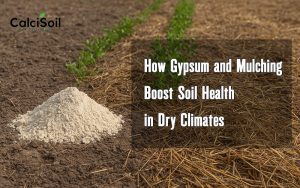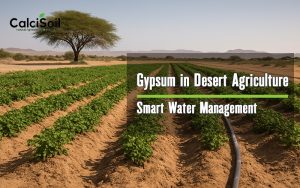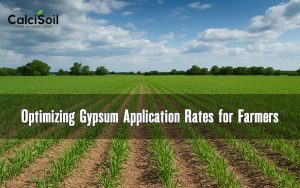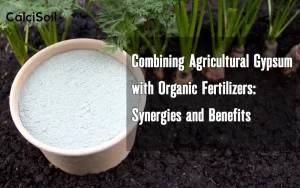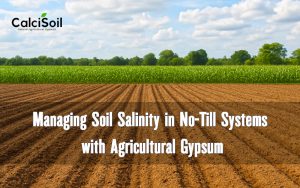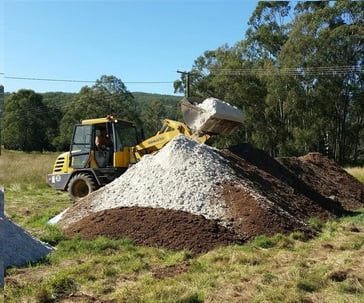
Gypsum Effects Agricultural Soils
The effects of gypsum on agricultural soils can be divided into three classes
- Its effects on soil physical characteristics
- Its effects as a fertilizer on plant nutrition
- Its effects as a soil amendment on problematic soils (sodic, acidic, clay soils)
In agricultural practices. main objective in managing soil, water, air inside is to allow plant roots to achieve their full genetic potential so. that they absorb as much water and nutrients that they can. Under these conditions, plants can realize their maximum yield per hectare. Consequently, suitable soil physical characteristics are one of the most important factors in maximizing yield.
If soil physical characteristics aren’t appropriate for root growth. fertilizers and liquid nutrients use will have very little effect on crop yield. Unfortunately, farmers usually ignore this. and try to increase yield only by applying fertilizers and chemical solutions to soil. whereas a small change in soil physical characteristics will increase efficiency of chemical fertilizers. Gypsum is one of the important soil amendments substantially increases crop yield in agricultural lands by improving soil physical characteristics.
how can gypsum affect soil physical characteristics?
here are some additional details about how gypsum can affect soil physical characteristics:
1. Improved soil structure: Gypsum can help to improve soil structure in several ways. First, it can promote the formation of calcium carbonate, which can act as a cementing agent to bind soil particles together. This can help to create stable soil aggregates, which are important for maintaining good soil structure. Additionally, gypsum can improve soil structure by reducing the dispersion of clay particles. Clay particles can become dispersed in soil when they come into contact with water, which can lead to soil compaction and reduced soil structure. Gypsum can help to reduce the dispersion of clay particles by improving the flocculation of soil particles, which can help to stabilize soil structure.
2. Reduced soil compaction: Soil compaction can be a major problem in many agricultural soils, as it can lead to reduced root growth, poor water infiltration, and reduced crop yields. Gypsum can help to reduce soil compaction by improving soil structure and creating larger pore spaces in the soil. This can help to increase the movement of air and water in the soil, which can help to improve root growth and overall soil health.
3. Increased water holding capacity: Gypsum can increase the water holding capacity of soils by improving soil structure and reducing soil compaction. This can help to reduce water stress on plants during periods of drought, as the soil will be better able to retain water for longer periods of time.
4. Reduced erosion: Soil erosion can be a major problem in areas with high rainfall or steep slopes, as it can lead to the loss of valuable topsoil and reduced soil fertility. Gypsum can help to reduce erosion by improving soil structure and stabilizing soil particles. This can help to reduce surface runoff and increase the infiltration of water into the soil, which can help to prevent soil erosion.


